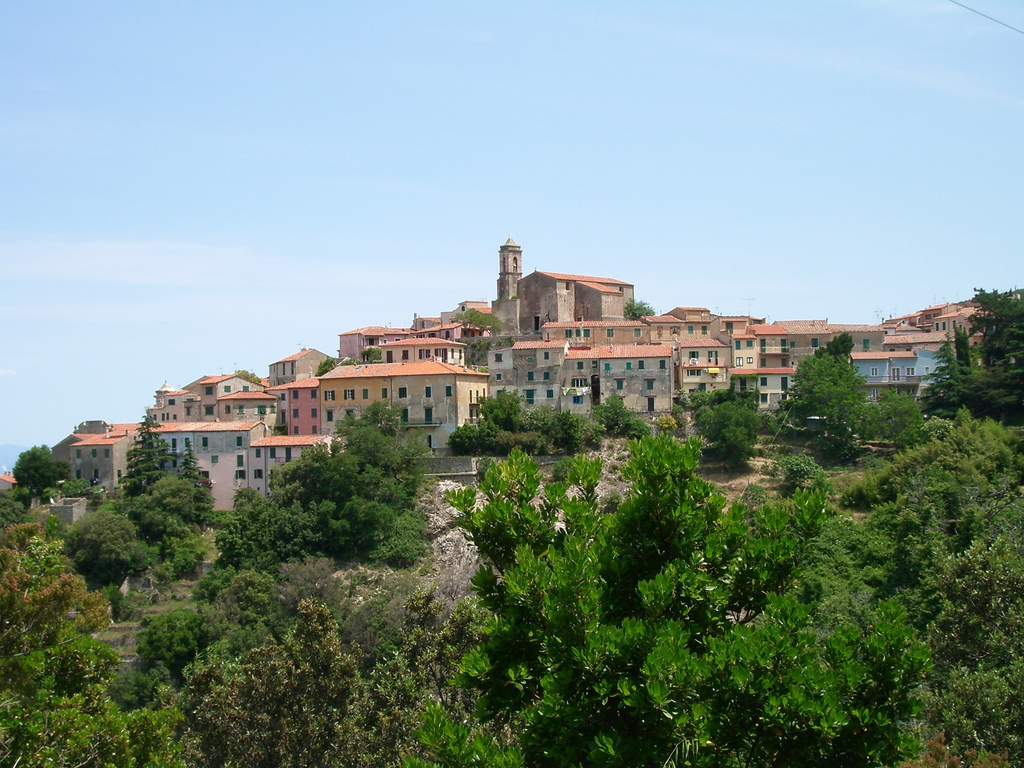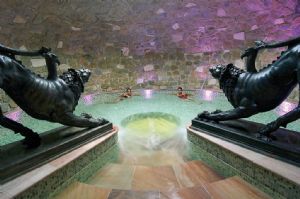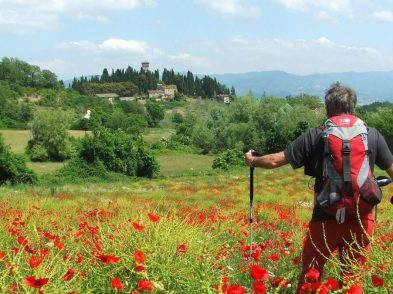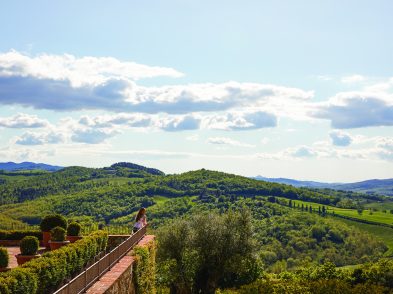Before I started spending a lot of time in Tuscany I hadn’t really heard much about Isola d’Elba. Recalling from my college French classes that Napoleon had been exiled there, I had always pictured a desolate, barren and wind-swept stretch of sand with the feisty French emperor moping behind bars in a cement shack, gnawing stale bread and moldy cheese, vengefully plotting his escape route.
Then, one rainy day last year at the start of summer, a colleague of mine who has family in Elba was raving about the island and my curiosity was piqued. I had been craving sunshine and salt air so I invited a friend to join me for a quick three-day getaway. During that long weekend, I was so struck by the lush natural beauty of the island, its crystal clear waters and the sweetness of its people that I found myself thinking longingly about Elba all winter and finally returned for a few unforgettable days last May.
Though I am hardly in a position yet to recommend ‘the best’ of anything, I have experienced enough to suggest an enjoyable two-day itinerary that will give you a glimpse of the treasures this stunning Tuscan island has to offer. My first piece of advice is to go in June or September. Your experience will be vastly different and inevitably less pleasant during the crowded high season.
Isola d’Elba, the largest island in the Tuscan Archipelago known primarily for its vast supply of minerals and semiprecious stones, is surprisingly easy to reach. You can take the train to Piombino Marittima then a short bus ride to the ferry. Or you can drive directly to the port in Piombino, which is about two hours from Florence, and pay about 10 euro a day to park. (You can bring your car on the ferry, but it might be cheaper to rent one on the island). Torremar and Moby ferry passengers to and from Elba every day, and tickets at the port office are around 32 euro roundtrip for the one-hour ride.
Approaching the island, you’ll be amazed at how massive and densely forested it is. After disembarking in pastel-hued Portoferrario, head down the red pedestrian pathway towards the town. A few blocks down a side street on the left, TWN rents motorbikes and cars at decent rates. Exploring the island by motorbike is preferable so that you can enjoy the fresh air, park easily and navigate through the traffic, which can be very heavy in July and August. (Tell Simone from TWN that you read this article in TF and he will give you a discount).
Italians will shake their heads in disappointment when they read this, but I do recommend starting your visit with a tour of Napoleon’s residence, Villa dei Mulini-a far cry from a cement shack. Although the once grand villa is weathered and its gardens sadly overgrown, some exquisite furnishings, such as his desk and library, remain, and the views framing a lighthouse are stunning. (For more history on Napoleon in Elba, see TF 139).
But enough about the emperor. I suggest you spend the rest of the day exploring any of the 70-some beaches along its 147-kilomtere coastline. Locals will direct you to the untouched west side of the island, but I would recommend going north to Capo Enfola. My favorite beach there, Sansone, is covered in white, silky-smooth rocks. Lying on them is like getting a hot stone massage, only a lot cheaper. The water is the clearest I have ever seen and since you have to hike 10 minutes down a footpath, it is not too crowded. Parking is limited so arrive early, and bring walking shoes, water, snacks and a beach umbrella if you need one.
Alternately, you can head east to Bagnaia, a sweet little seaside town with a twelfth-century Pisan church and enjoy a delicious lunch on the terrace at Il Faro, located right on the beach. From there, the freshly paved road to Rio nell’Elba, winding its way around the eleventh-century Pisan castle at Volterraio precariously perched above, is one of the most breathtaking stretches of road I have yet traveled. Around each curve, panoramic views of emerald green meadows and the azure blue sea alternate with bouquets of yellow scotch broom, purple thistle and red poppies.
After a refreshing gelato at Da Cipolla, take the road to Porto Azzuro just 20 minutes further, where I recommend you spend the night. As you descend into the port, keep an eye out for the Piccola Miniera (small mine) on the left. Normally I would not venture inside a shop selling minerals and rocks, but the collection of jewelry on the first floor is substantial and high quality. Downstairs there is a vast selection of stones and minerals and a laboratory where the rocks are shaped and shined. A little train chugs its way through a dark tunnel with simulated mines of hematite, pirate, and quartz. The 15-minute guided tour in both Italian and English is a fun experience for kids, and the secret highlight is worth the 7 euro ticket. (See http://www.lapiccolaminiera.it for more information.)
Cap off this adventuresome day by relaxing in a little bar in a postcard-perfect piazza, sipping the best margarita in all of Tuscany at El Curando, in the center of Porto Azzurro. ‘The Doctor’ knows how to mix drinks, and his array of exotic cocktails is accompanied by a nice assortment of appetizers.
Affordable hotels on Elba tend to be overpriced and a bit run-down. Fortunately, I happened upon Cala di Mola, just outside of Porto Azzurro, with a large pool overlooking the sea. The rooms are sparkling clean, the staff is beyond friendly, and it is just a short walk from my favorite restaurant on the island, La Caletta. Here you can dine at a romantic candlelit table under the stars overlooking the harbor, enjoying the catch of the day and savoring a glass of Elba’s delightful white wine.
On a warm summer night in Capoliveri, just five minutes away, sultry lounge music drifts onto the cobbled streets from the bars and shops. Local families mingle in the piazzas until well after midnight, and Sugar Reef entertains night owls with DJs, live music and dancing. Tucked into a side alley with tables filling every nook and cranny, Il Chiasso is ideal for a more historic, traditional dining experience.
For your second day, rent mountain bikes and hit the trails on Monte Calamito or explore the beaches on the west side of Capoliveri. I prefer Barabarca, which has an approach so gorgeous it literally stops you in your tracks, and neighboring Zuccaro. You’ll find little bars and restaurants and large parking areas at both. Pareti is a more accessible, sandier beach, as is the slightly longer Inammorata, named after a woman who allegedly died there while waiting for her love to return from the war.
On the chance that the traffic is heavy, give yourself a good hour to return to Portoferraio to catch the ferry back to Piombino. If you’re like those of us who can’t believe it took so long to discover Elba Island, you’ll feel a little melancholy as your boat putters away from the dock. Don’t despair. Just open your map and start marking all of the places you want to see on your next visit.








